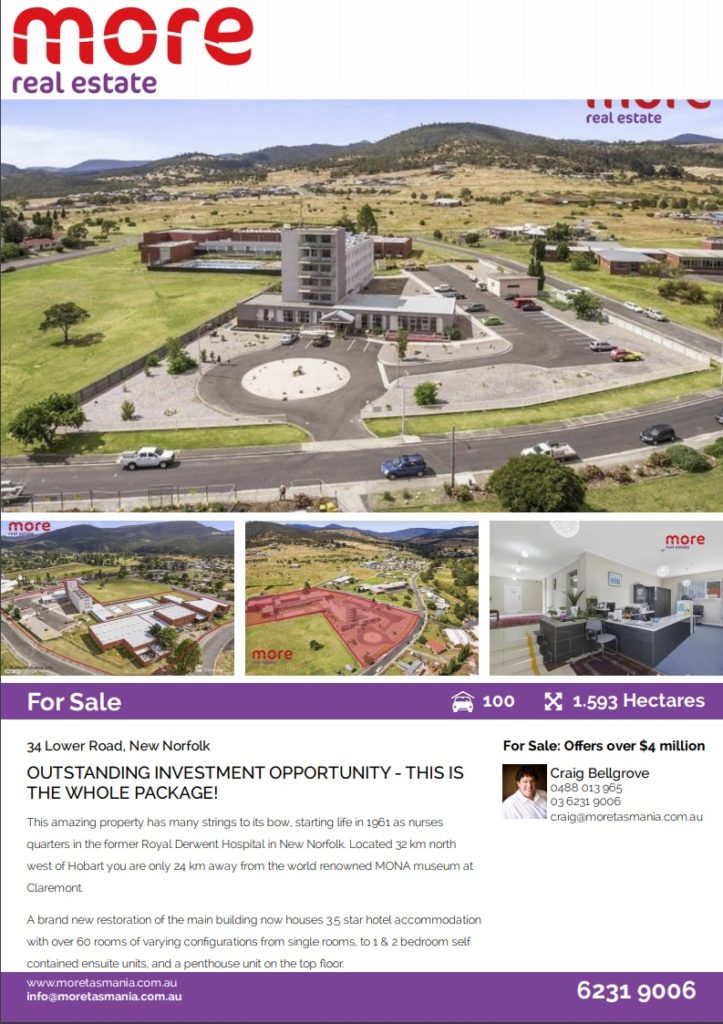
Most of the remaining east side of the Royal Derwent Hospital is currently for sale. Offers over $4 million are being accepted for the above section. The remaining sections are negotiated with the Agent.
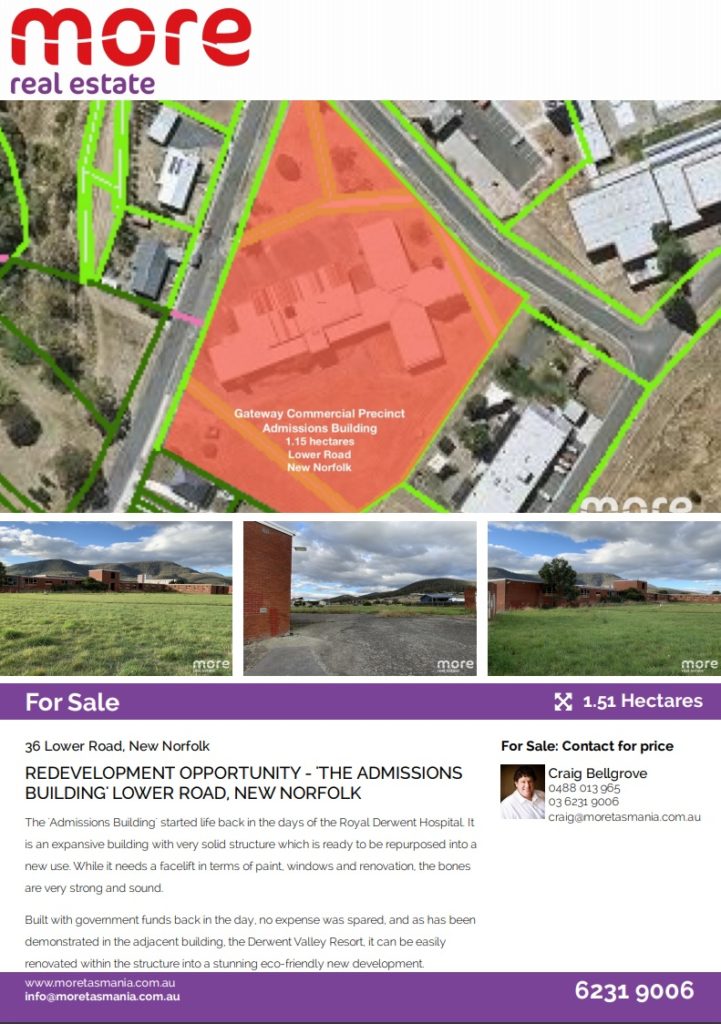
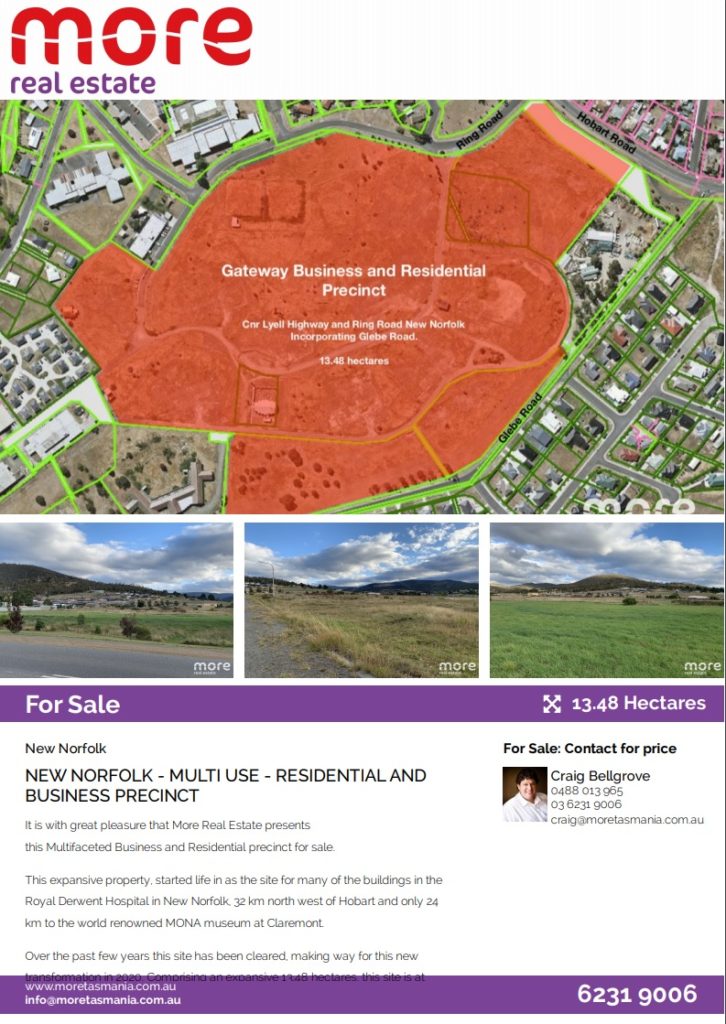
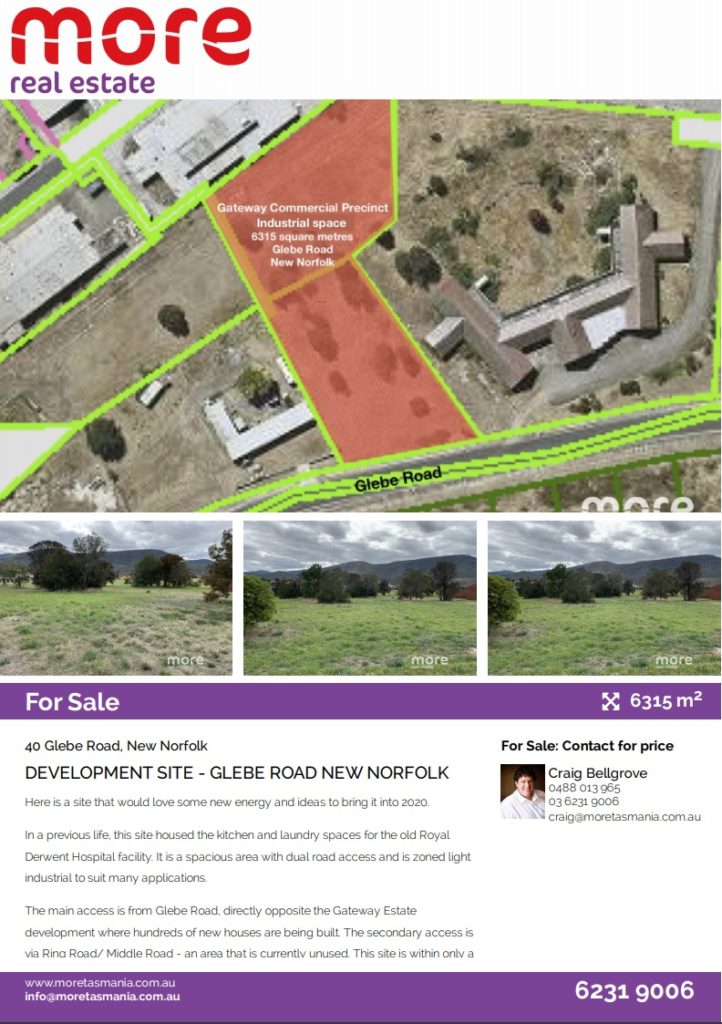
Past to Present. Memory to Action
NOW SOLD
We have a hard to find copy of “Troubled Asylum” by Ralph. W Gowlland for sale. This is a white covered, signed, first edition which makes this even rarer. This copy was owner by Dr Sue Fricker who worked with Gowlland in the 70’s at the Hospital.
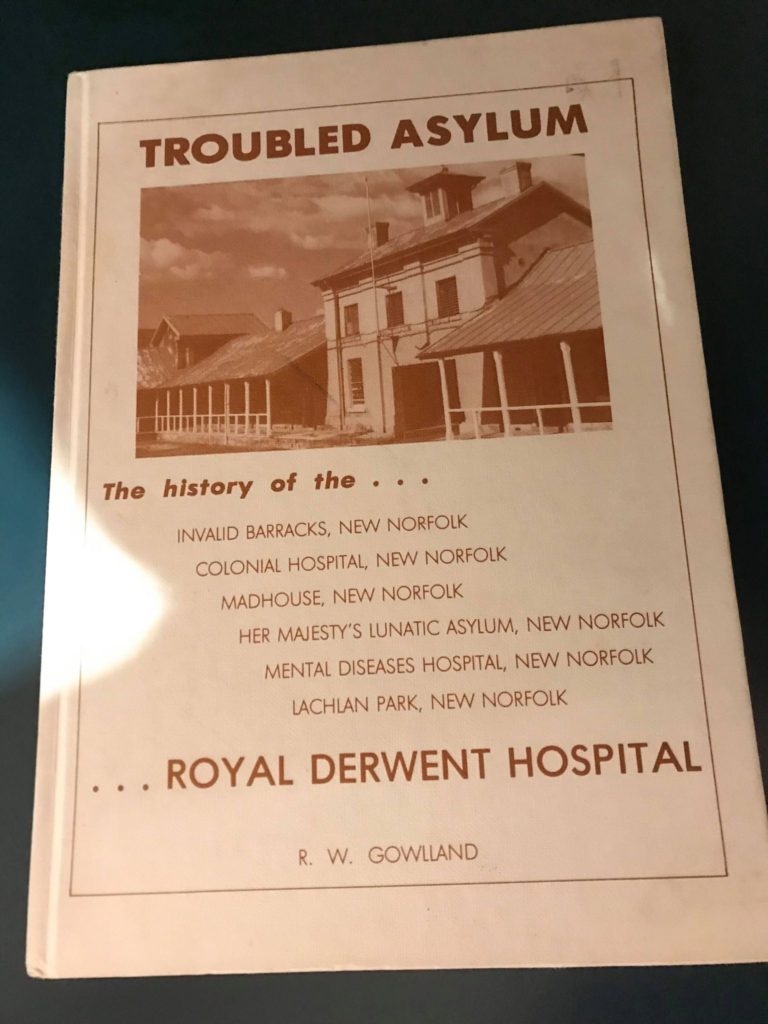
Condition: The cover has a few minor marks, the pages are all dry and fine, the binding is in good condition. The picture below and above is the actual book for sale. The current owner will donate 100% of the proceeds to the following charity
“A Fairer World” http://afairerworld.org
Postage: within Tasmania is free, contact mark@willowcourttasmania.org for other details including how to deposit funds directly into the charities bank account.
Cost: $300
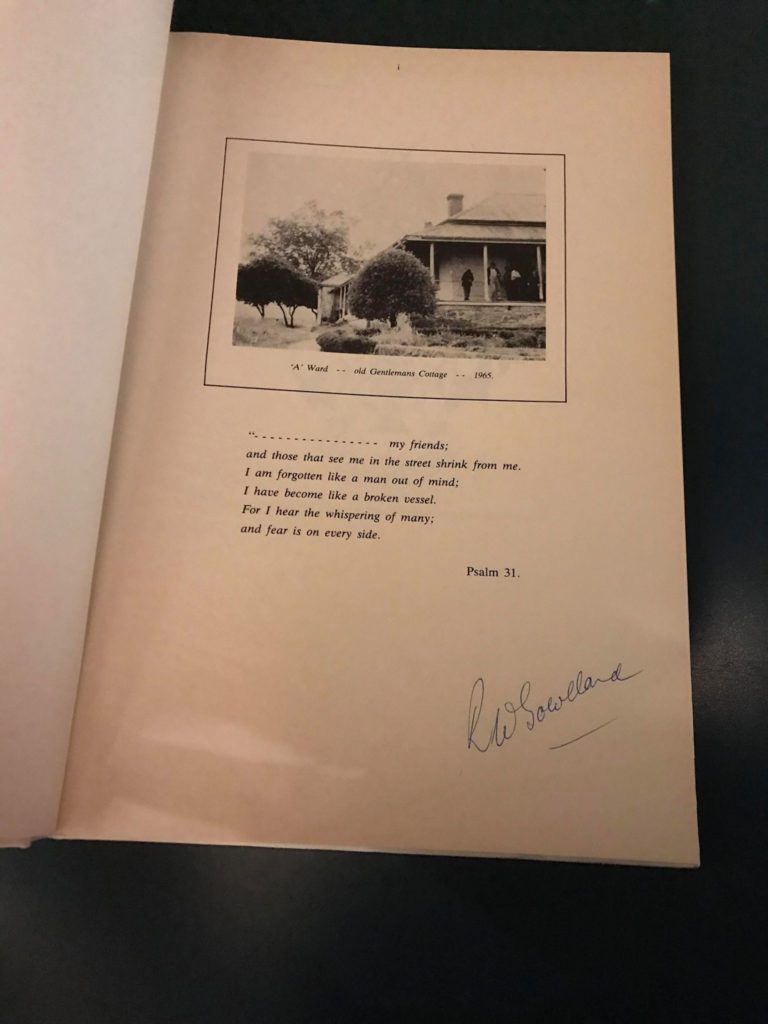
In the Derwent Valley Council’s Agenda this last week there is a note to amend the decision made on the 20 June 2019 to remove reference to Frascati House and only include the Barracks in the lease arrangement with Salamanca Art on behalf of the Derwent Valley Arts Group. http://www.derwentvalley.tas.gov.au/webdata/resources/minutesAgendas/19%20March%202020%20-%20Council%20Agenda.pdf Item 10.12
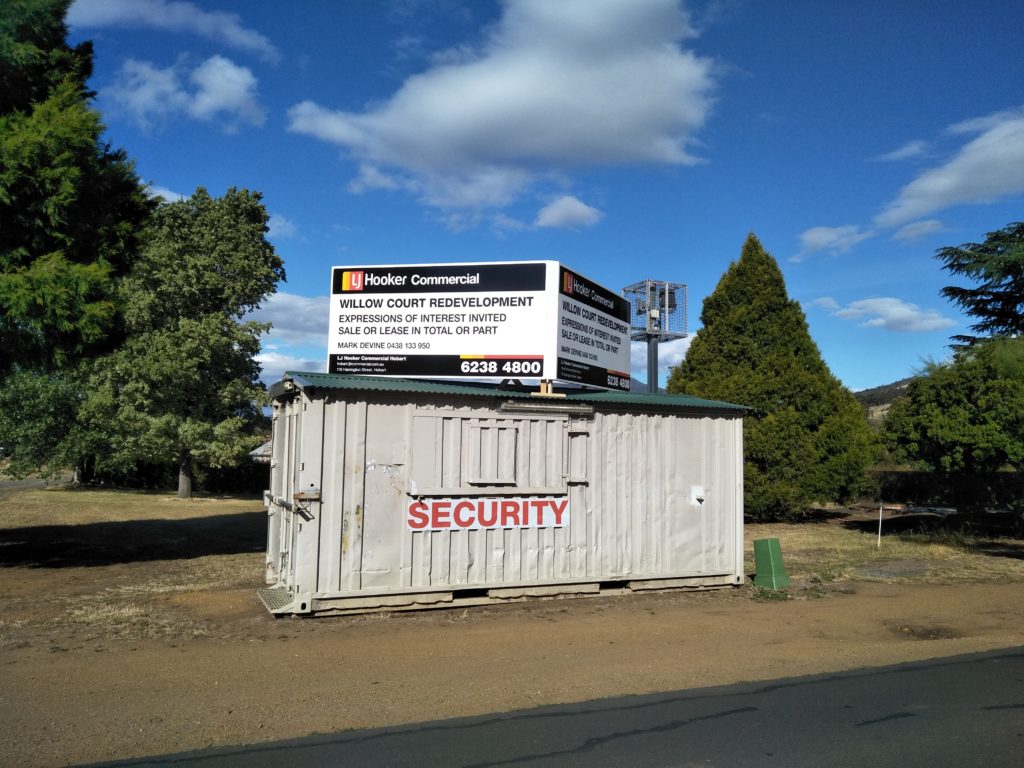
The Derwent Valley Council opened up an expression of interest process to off load the remaining sections of the hospital under their management. There were a number of groups who expressed an interest in the site at the time and within the allotted time period. There was also one successful applicant who was entertained outside of the expression of interest period. Shortly after the announcements of successful applicants the General Manager of the Derwent Valley Council instigated a Probity Investigation into the tender process for the Sale or Lease of Willow Court with a very narrow brief of “examination of the decision by the Council to entertain unsolicited proposals after the closure of the EOI process”.
.
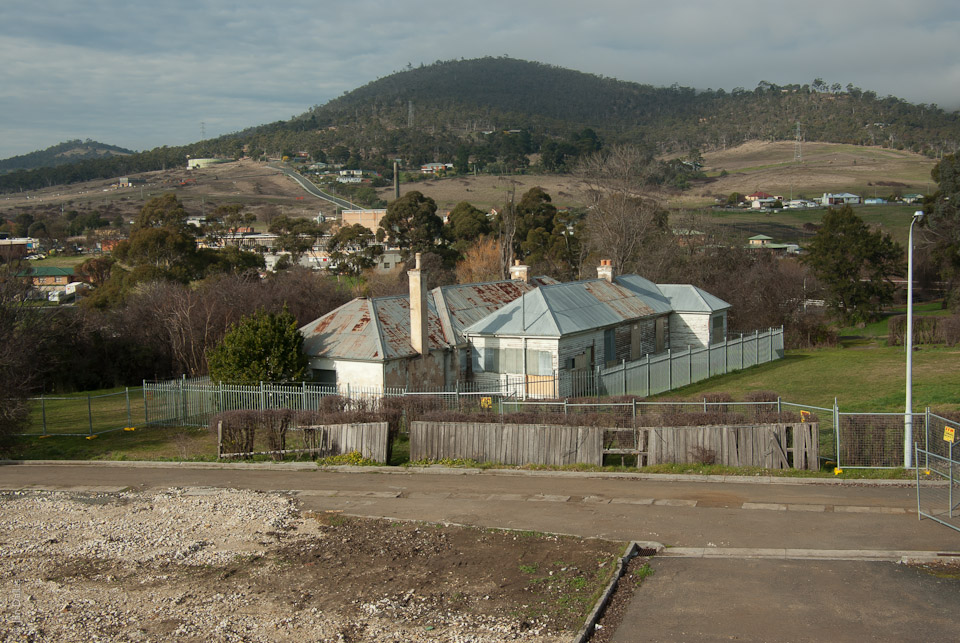
The site owners have had a long history of offering the assets to business and groups who have had ideas, but in many cases, without due diligence these great ideas have failed or never got off the ground, so the property has returned back to the DVC often in a much worse state. This leaves the rate payers of the Derwent Valley to pick up the tab.
Works have not started in the Rum Distillery which is the remaining property offered for lease. While the locks have been changed there isn’t any visible work in the area previously approved for work by the Derwent Valley Council in May 2019.

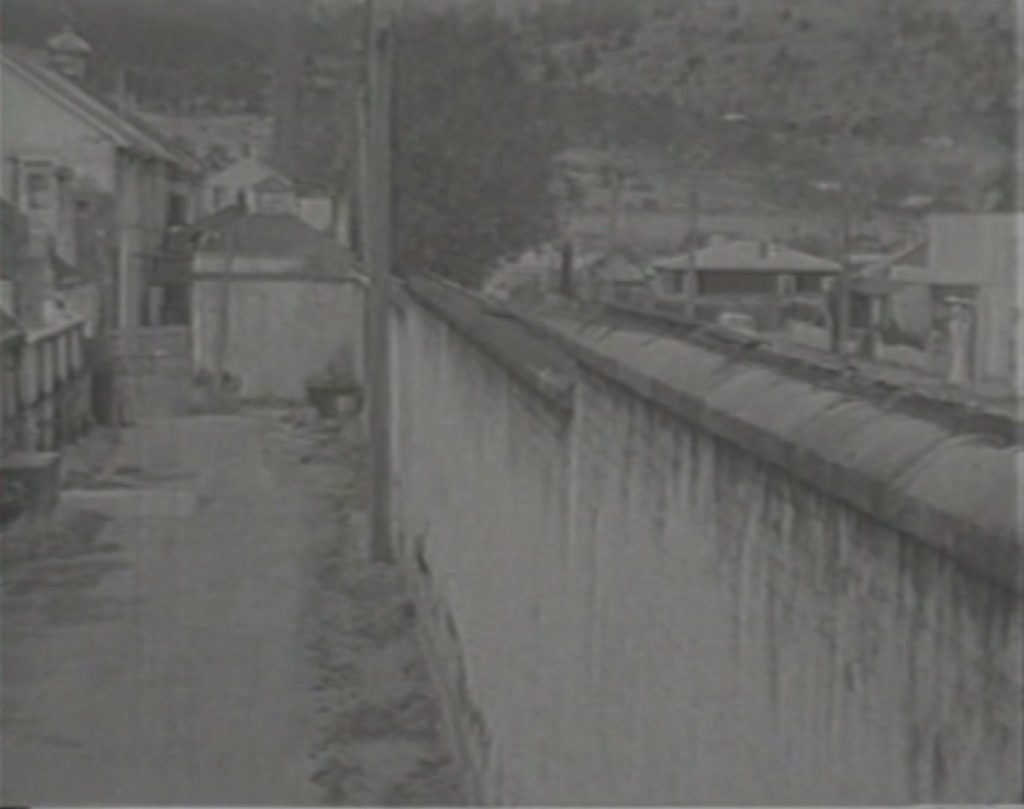
Alongside Humphrey Street was the wall that segregated the hospital and the community and on the hospital side of the wall there was a small laneway called “Flinders Street” by the late June Purkiss who worked at the hospital from the 1940’s. It was so busy with foot and cart traffic that it was said to resemble that busy CBD Melbourne street.
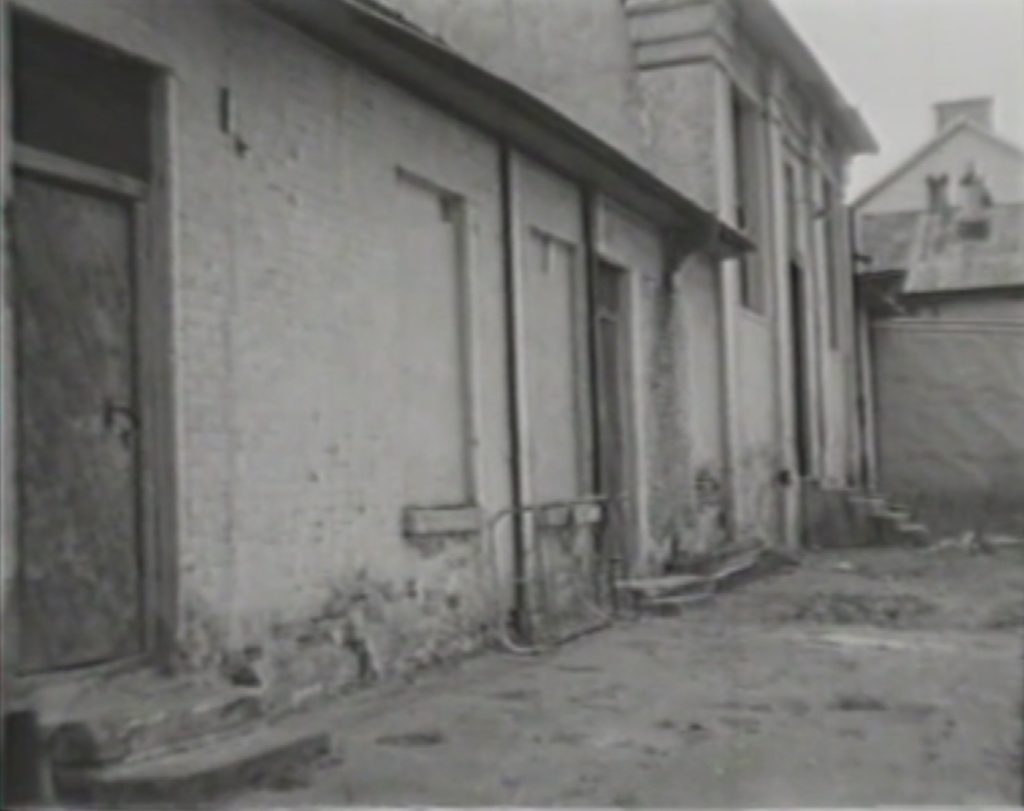
All this area has now been demolished including the rear of the Barracks building. This was to make way for new wards in the early 1960’s. The front of the Barracks on the photo below shows the hole and driveway that was created for trucks to remove the building rubble. The rubble was used for widening the local roads in the Derwent Valley, filling in an area on the Esplanade and also as fill up against the hospital wall so the new ward for the Criminally Insane could be built on top.
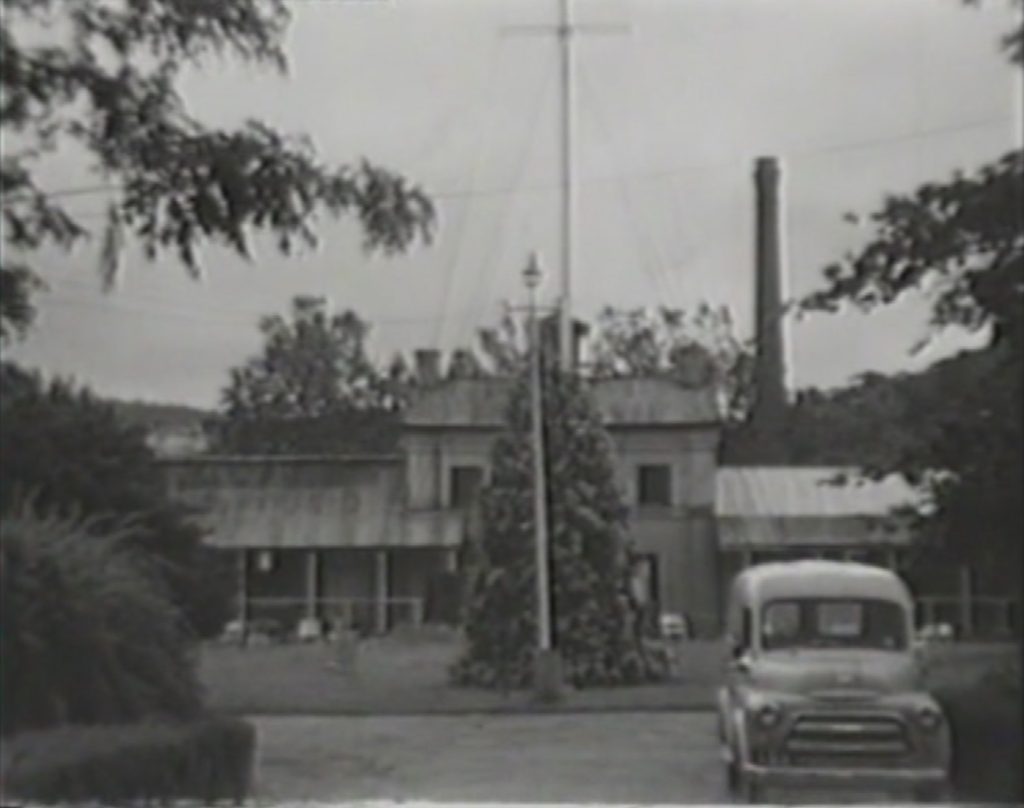
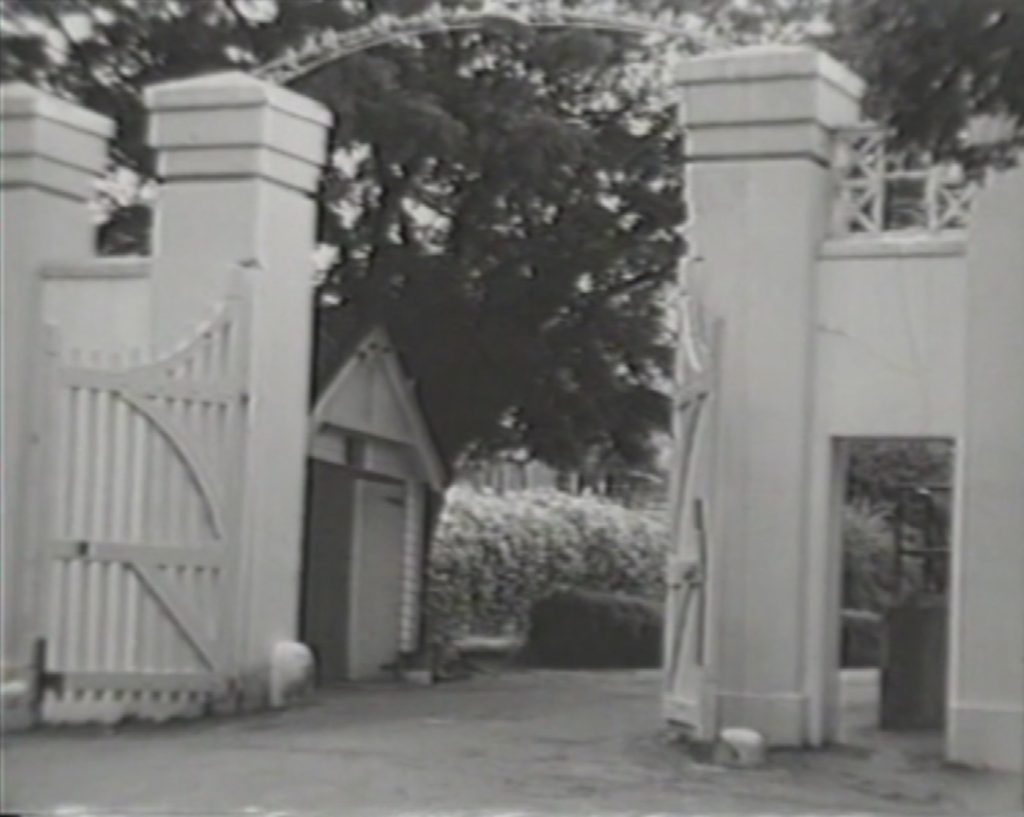
The other old photo above is the original wall and gates that led up the driveway that faces the front of the Barracks. There has always been debate as to where the original gate disappeared to, some say that a politician has them on the front of his country property still. This has never been proved though.
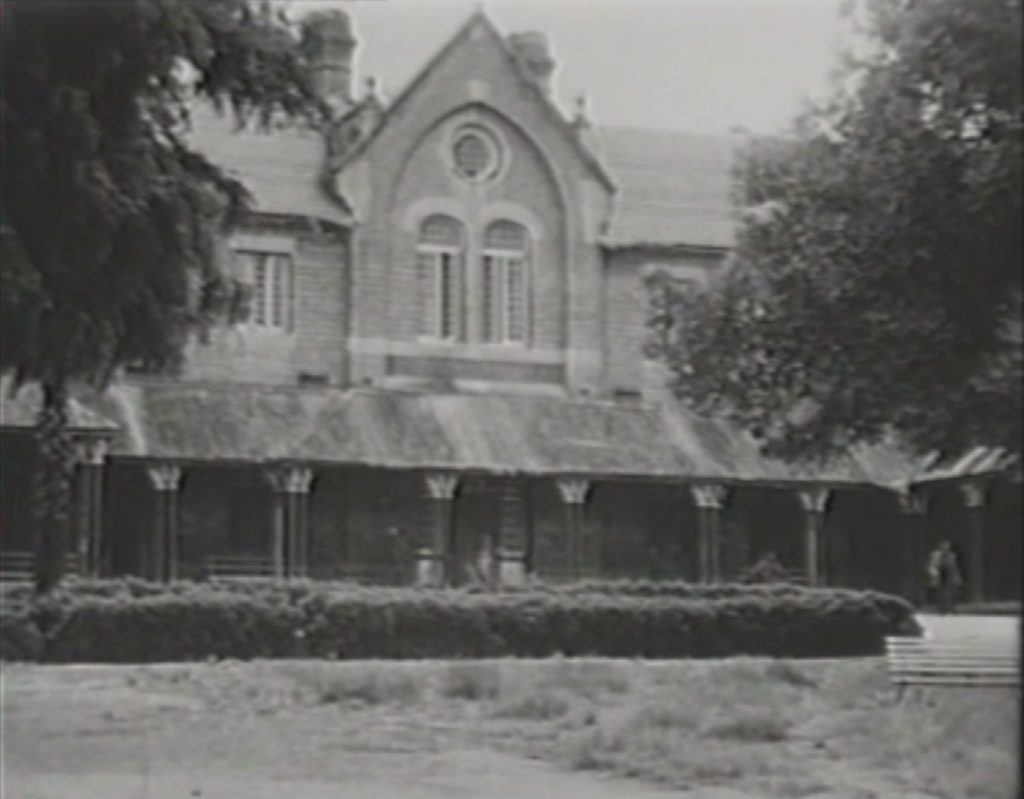
B Ward (above) was also demolished in the early 1960’s but its foundations can still be see in the Geophysical mapping that was done by Flinders University. The red lined square shape is the current C Ward yard which contains part of B Ward or Male Refractory and part of A Ward later referred to as the Gentleman’s Cottage”.
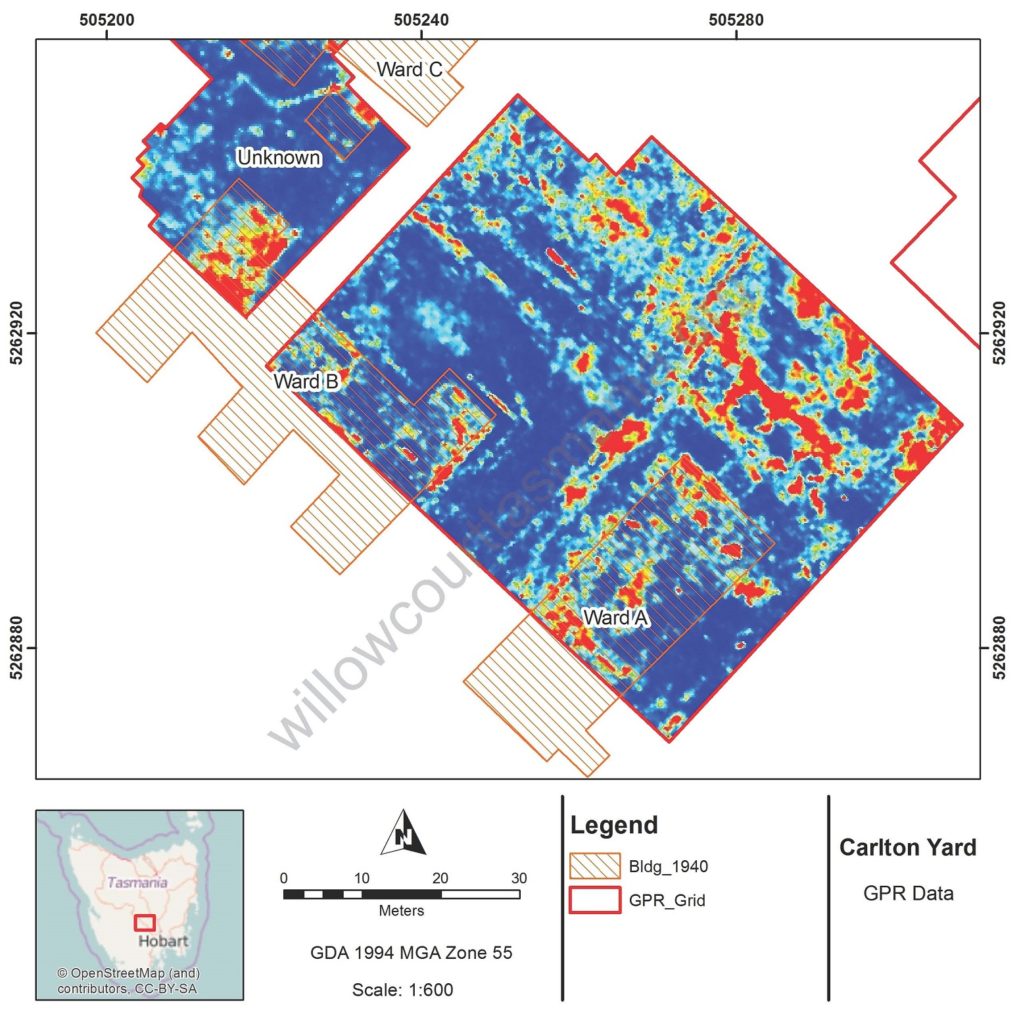
One of the most recognisable buildings on the site was K1 and K2 wards (below) and the large central clock tower. When this was also demolished in the early 1960’s one resident from Humphrey Street stated she could now see the sun in the morning for the first time since she live there in the shadow of the tower. Many were sad to see this iconic structure demolished, but a hospital that needed to progress was the order of the day and new buildings were going to occupy the site soon.
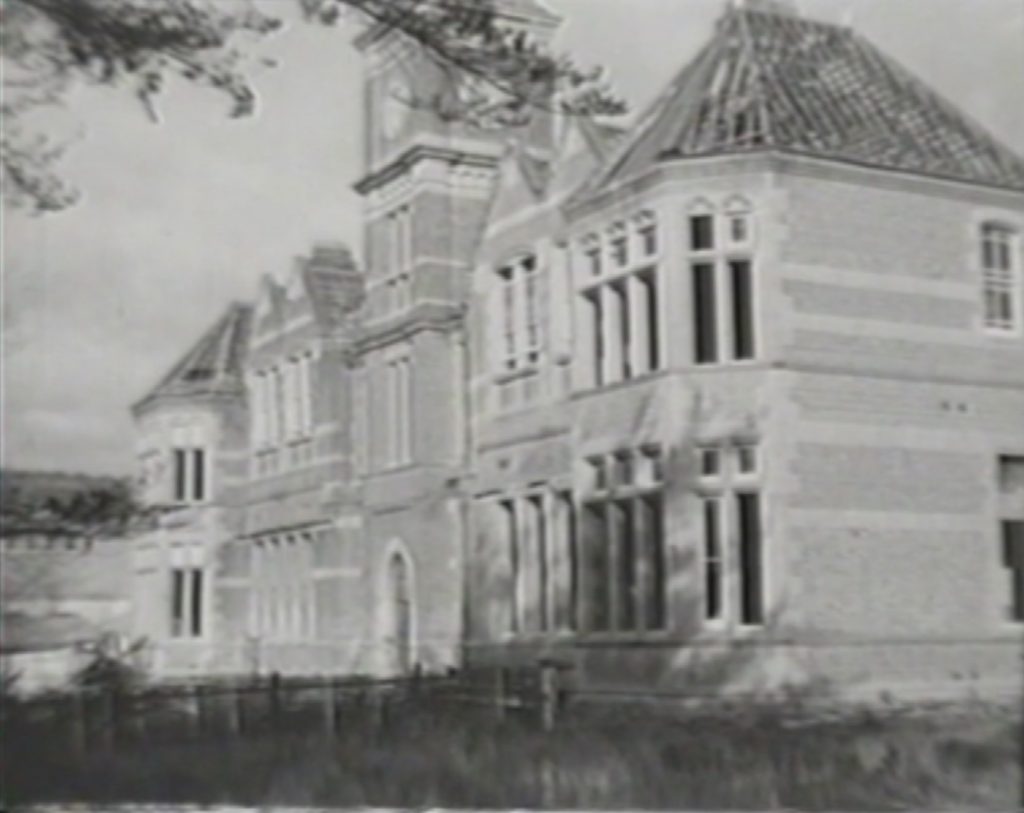
“In 1919, the hospital was visited by the terrible ravages of the pneumonic influenza which was sweeping the world at the time. There seems to have been two strains involved – one less deadly than the other. Dr. MacDonnell’s report gives some very sobering statistics” Troubled Asylum; R. W. Gowlland.
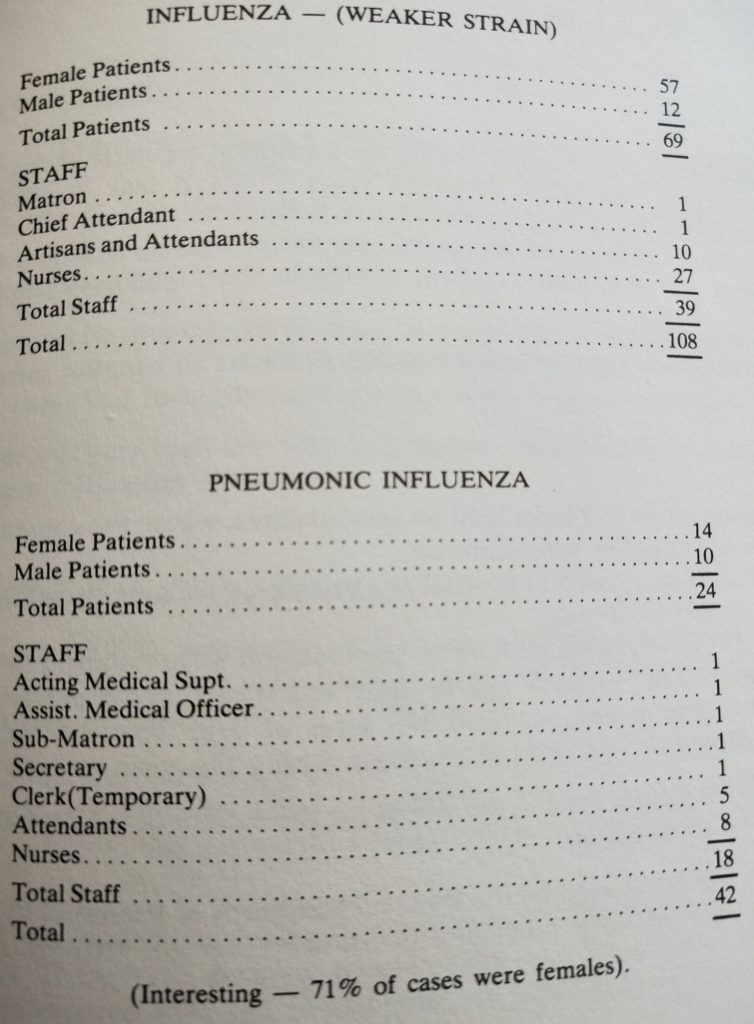
For the hospital this created a major strain with many in the community becoming sick including many staff. It’s also interesting to note that female staff once married at this time were not allowed to continue working in the hospital, so those with sick families at home didn’t have work obligations, leaving the nursing to those who weren’t married. There were 108 cases of the weaker strain recorded and 42 cases of the more severe, the later taking 11 lives including the Sub-Matron. In all there were 18 staff and 24 patients affected by the severe strain.
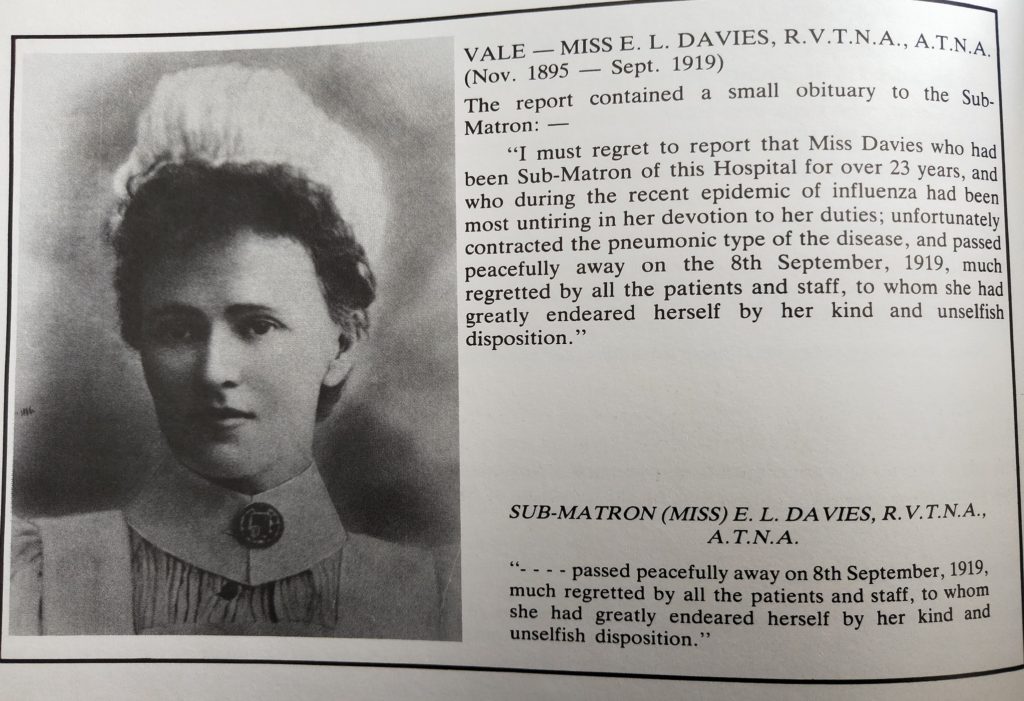
Hello Willow Court Supporters,
We start the year off knowing that the site has been given away by the very people who were elected to manage it, some has been given to the Arts Community while other parts to private businesses. I suspect there will be more news over the next few years about this and the methods that this was do and also the “independent” investigations into the processes used.
But the history is still alive and we at the Willow Court History Group still intend to gather what we can and share that knowledge in a respectful way. This website has clicked over 2 million views this year, which shows that people are interested in the history for personal, family or other research reasons.
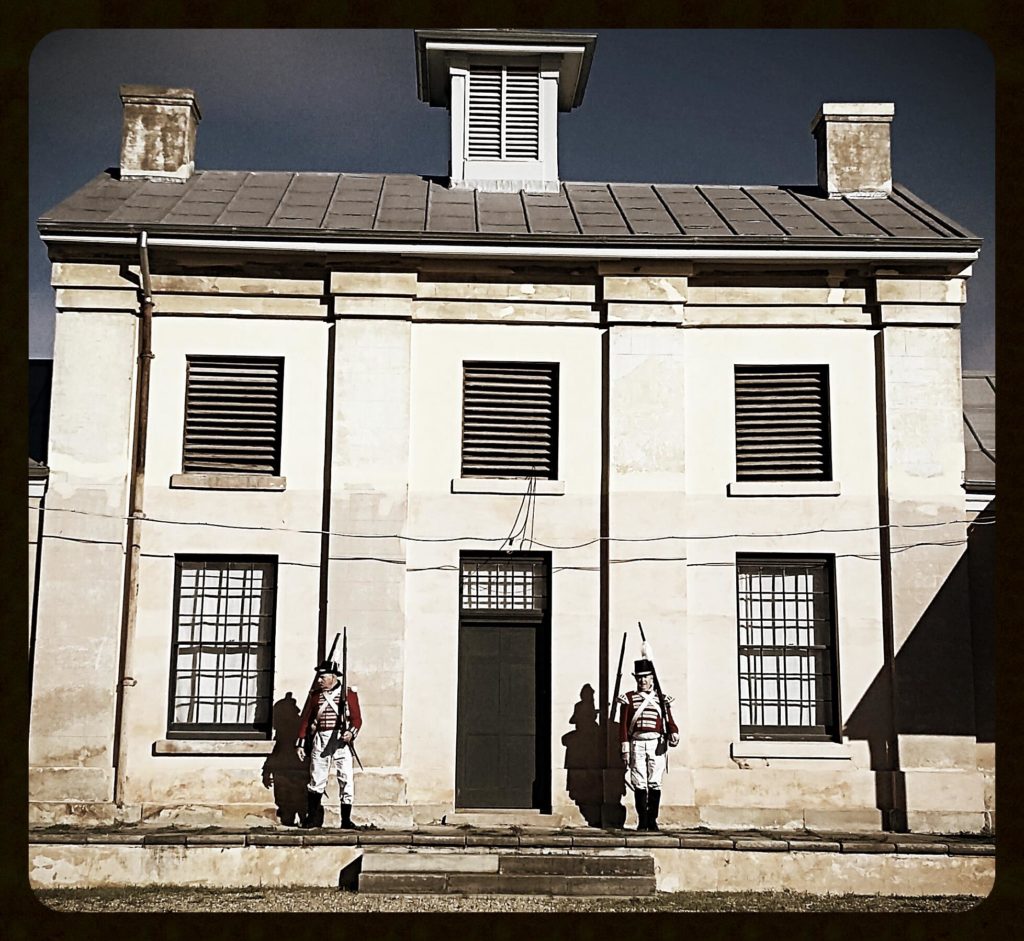
This year it is my plan to have 4 face to face (non political) meetings a year where the history can be studied, shared and recorded. This idea is open to anyone with an interest in the site. I intend to have Guest Speakers to enhance our learning and enjoyment. I will announce the first of these in the coming weeks.
Until then happy New Year from us.
PS, still looking for venue. 03.03.2020
Click the picture below to hear a great podcast about Sir John Gellibrand from the lectures of the Tasmanian Historical Research Association. (55 minutes). Sir John was instrumental in the set up of Millbrook Rise Psychopathic Hospital and a respected returned Service Man. The podcast helps us to understand the motivations that drove Sir John to not only get this up and running but other ideas to assisted returned service personnel.
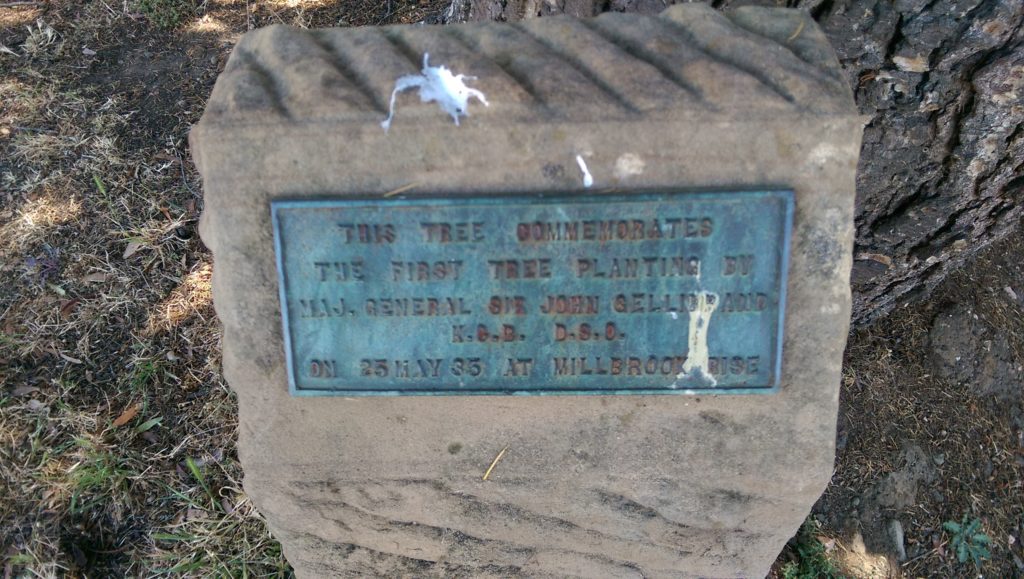
Millbrook Rise Psychopathic Hospital was joined to Lachlan Park Hospital by the sharing of staff and facilities before it formally joining the Hospital in 1968 and becoming part of the Tasmanian Mental Health Services under the common name of the Royal Derwent Hospital.
We have a lot of information and photos of the original Derwent building on the Millbrook Rise tab on this website. Click Here.
Present: Spring Seminar, Sunday 20th October
Further information and bookings available here.
20th October, 2019. Spring Seminar, Topic: “A more hopeless class of subjects?” Convict Women at the New Norfolk Asylum. Venue: Hobart Town Hall
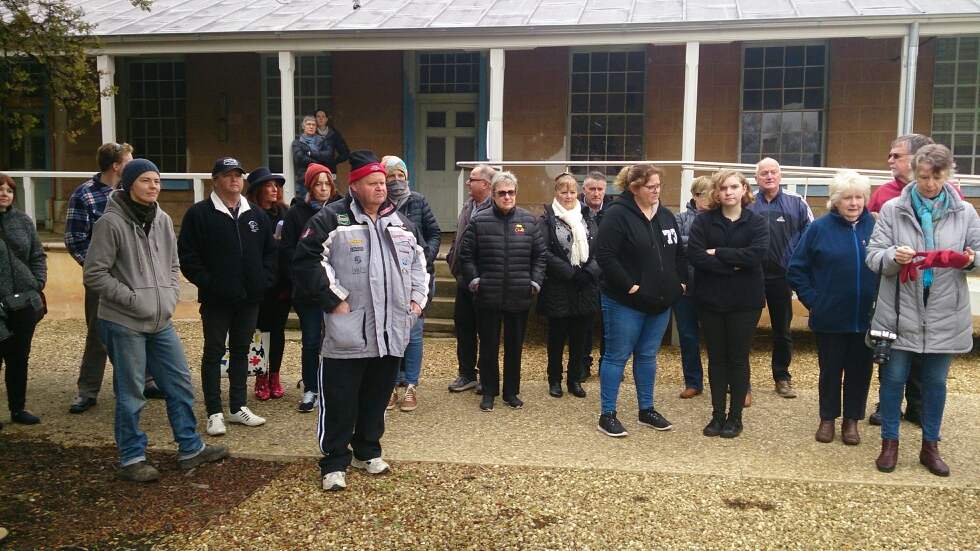
This was posted on our Facebook Group a few days ago by Anne Salt who is a member of the Friends of Willow Court. I had the pleasure of assisting them on one Sunday with the tours of the site.
The Friends of Willow Court are overwhelmed by the interest in Willow Court’s history shown by people from all over Tasmanian, and the mainland. Over the last two open days, and from a private bus tour 286 people have visited the site. Many have expressed concern and disbelief that the Derwent Valley Council is in the process of subdividing and handing significant parts of this site to a private developer, without consideration for ongoing community access and interpretation.
One couple decided to let our Councillors know their thoughts on Willow Court, and the economic benefit to the district when the site is open. Hopefully the Councillors received, and read the email.
This is what the visitors had to say in part,
‘We are Tasmanians from the Launceston area. We came south specifically to New Norfolk for the weekend. We drove around the area, ate at a local bistro, filled the car with fuel at a local service station, stayed overnight in local heritage accommodation, had coffee at three different local cafes, purchased snacks and milk from a local corner shop, ate breakfast at a local café, purchased goods from a local antique shop and paid to attend the Willow Court Tour. In all, for the Saturday afternoon and Sunday we spent in New Norfolk specifically to attend a Willow Court tour we spent over $780. If it was not for Willow Court, we would not have visited at all.
We urge the recently elected local Council to look at some of the decisions that are being made and consider what their footprint on the local history may look like to visitors to New Norfolk in the coming years. Don’t let our grandchildren or great grandchildren (we are both 47 and don’t have grandchildren yet) not have the opportunity to visit this facility in the future if they wish. Keep it open, restore and upgrade the facility for Tasmanian locals, interstate and international visitors for generations to come.’
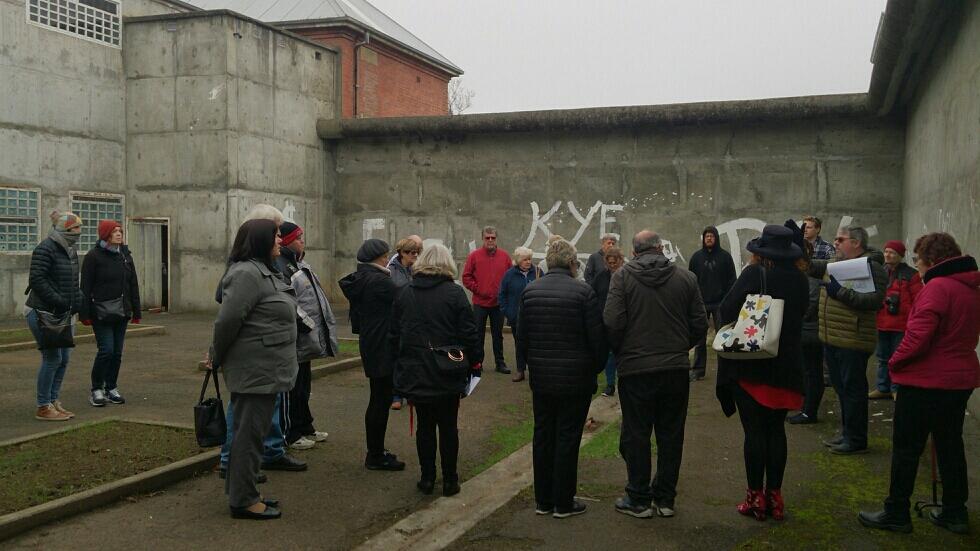
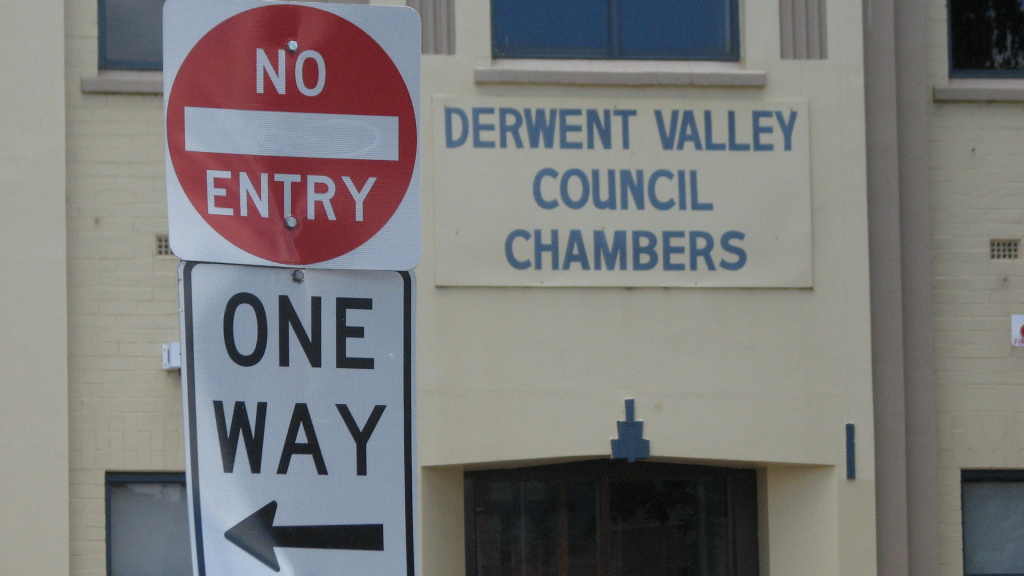
On the 20th June at the Derwent Valley Council meeting the General Manager instigated a Probity Investigation into the tender process for the Sale or Lease of Willow Court. He based this on “perceived” favourable treatment of the New Norfolk Rum Distillery proponent’s application.
He explained that there were four expressions of interest, one received during the allowed time period of the EOI and was assessed against the EOI criteria.
The three others unsolicited expressions of interest were assessed “on their own merits”, according to the General Manager on the audio recording of the last Council Meeting.
Today the same General Manager stood down after the cull of birds on public land owned by Council. An authorised Contractor undertook the poisoning and removal of a number of birds at Tynwald Park New Norfolk.
This raises big concerns and questions about the decision making ability of the General Manager, who runs the day to day operations of the Derwent Valley Council. Secondly we don’t know who was appointed as the “independent” investigator and why such a quick call for an investigation was made?
There has also been a major change to the Development Application from the Distillery proponents who have appealed a decision of the Derwent Valley Council to limit the tastings in the approved “tasting room” to rum produced on site by the proponents, to sales of other alcohol products from other producers.
This would effectively turn the application into an open hotel with distillery attached. This is still before the Planning Appeals Tribunal.